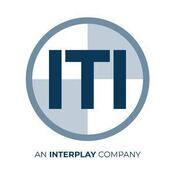Connecting Sharable Content Object Reference Model (SCORM) courses to an existing Learning Management System (LMS) is a crucial aspect of growing your training library. Here are the top 15 considerations for this process:
-
SCORM Compliance: Ensure that your SCORM courses are compliant with the latest SCORM standards. This ensures compatibility and smooth integration with most LMS platforms.
-
LMS Compatibility: Verify that your LMS supports SCORM content. Not all LMS systems have native SCORM support, so this is a critical initial step.
-
Content Packaging: Ensure your SCORM courses are correctly packaged, including all necessary files, metadata, and manifest files. This packaging should follow SCORM guidelines to guarantee successful upload and playback.
-
Testing and Debugging: Thoroughly test your SCORM courses within the LMS environment. This includes checking for any compatibility issues, ensuring all interactions work as expected, and troubleshooting any errors that may arise during playback.
-
Data Reporting: Make sure that your SCORM courses can track and report learner data accurately. This is important for tracking progress, completion rates, and assessing the effectiveness of your training materials.
-
User Authentication: Integrate user authentication with your LMS, ensuring that only authorized users can access the training content. This is crucial for maintaining security and privacy.
-
User Experience (UX): Pay attention to the user experience within the LMS. Ensure that the SCORM courses are easy to navigate, responsive, and visually appealing to engage learners effectively.
-
Updates and Maintenance: Establish a plan for regularly updating and maintaining your SCORM courses. Update with content revisions, bug fixes, and compliance updates should be managed efficiently.
-
LMS Support: Collaborate closely with your LMS and content provider's support team. They can offer guidance, troubleshoot issues, and provide updates on any changes in SCORM compatibility or LMS features.
-
Scalability: Consider the scalability of your SCORM courses. As your training programs grow, ensure that your LMS can handle increased demand without compromising performance. Work with your content providers to ensure you have a training plan in place to foster the growth of your program.
-
Backup and Data Security: Implement robust backup and data security measures to protect your training content and learner data. This is particularly important in industries with strict compliance requirements.
-
User Support: Provide adequate support for learners using the LMS and its content. Clear instructions, FAQs, and responsive customer support can improve the overall experience.
-
Compliance and Reporting: If your industry requires regulatory compliance, ensure that the SCORM courses and LMS support the necessary reporting and documentation for audits and certifications.
-
Integration with Other Systems: Evaluate whether your LMS needs to integrate with other systems, such as HR software, to streamline user management and reporting processes.
-
Feedback Mechanisms: Implement feedback mechanisms within your SCORM courses to collect input from learners. This can help you improve the content and the learning experience continually.
By carefully addressing these factors, you can effectively connect SCORM courses to your existing LMS, enhancing the delivery while upgrading your online training program's content.
We're here to assist you. At ITI, we collaborate closely with your organization to seamlessly integrate our SCORM-packaged content into your existing LMS. Our online library of crane and rigging courses is widely recognized as the industry benchmark, trusted by esteemed customers such as Mazzella and Barnhart for training their operators and riggers.
Contact an ITI Online Learning Specialist today!





COMMENTS